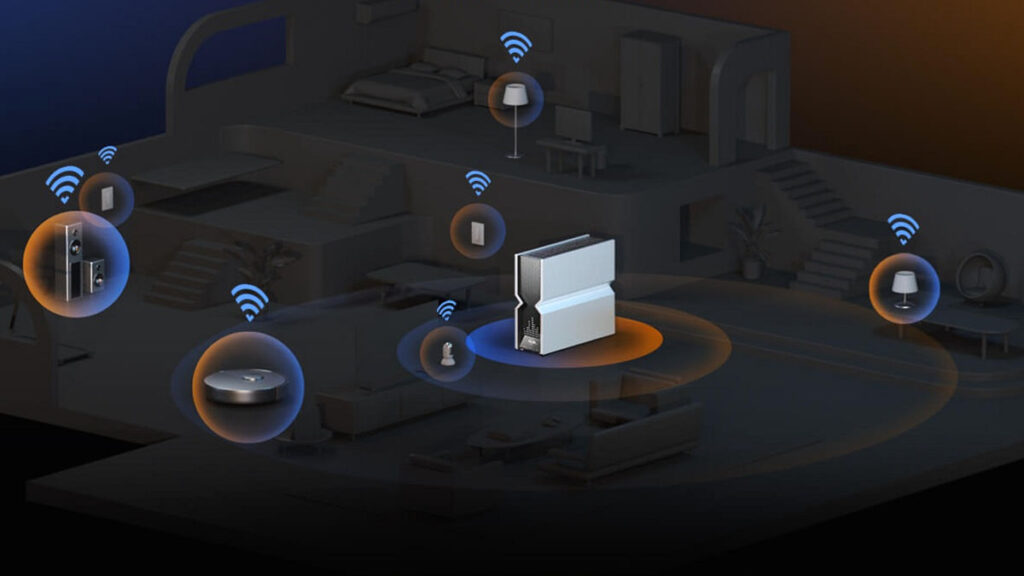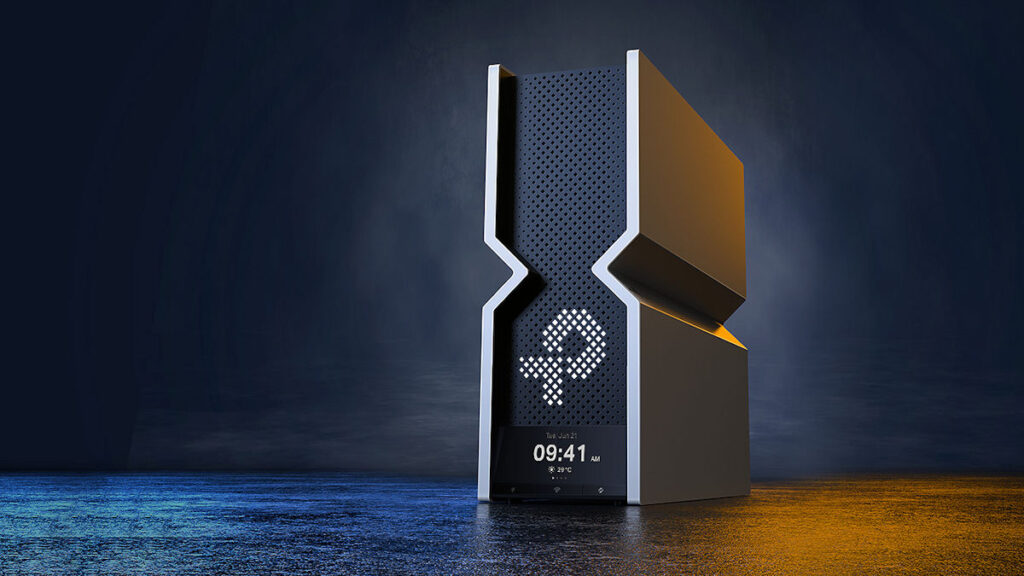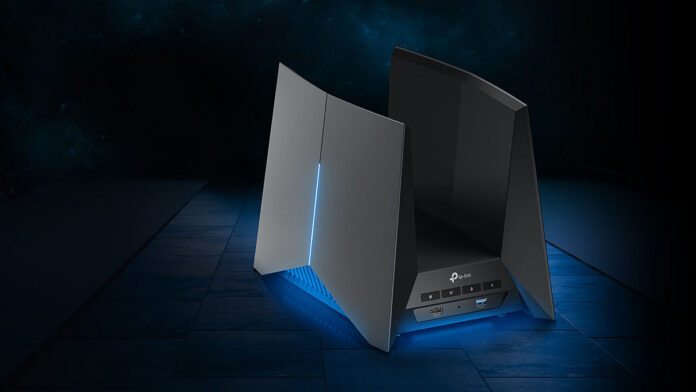Wi-Fi 7 And The Future Of Networked Security Solutions.
Wi-Fi 7 And The Future Of Networked Security – Wi-Fi 7 is likely to reframe wireless networking capabilities for security installers and integrators through improved performance, increased bandwidth, reduced latency, enhanced security and better network efficiency.
While Wi-Fi 6 and Wi-Fi 6E expressed incremental efficiency improvements, Wi-Fi 7 (IEEE 802.11be), delivers significant technological advancements, directly impacting security installers and integrators, who will benefit from greater network flexibility and a growing potential fusion between their security solutions (and devices) and wireless data networks.
A key improvement with Wi-Fi 7 is its expanded bandwidth capabilities. Where Wi-Fi 6 offers 160MHz channels, Wi-Fi 7 doubles this to 320MHz, spiking throughput. With potential theoretical speeds reaching up to 46Gbps, Wi-Fi 7 smacks Wi-Fi 6E’s 9.6Gbps maximum clean out of the park. Of note, the latest quad-band Wi-Fi solutions are already 24Gbps – clearly future chokepoints will be legacy hardware, ill-designed networks, slow transmission rates from end devices and more.
For security installers and integrators, this increase in bandwidth opens new possibilities for applications shifting ultra-high-definition video, real-time analytics, and cloud-based security management systems – especially if they are doing cool and complicated things with multi-sensor cameras and video content analysis.
Wi-Fi 7 also enhances network reliability with the introduction of Multi-Link Operation (MLO). MLO enables simultaneous connection across multiple frequency bands (2.4GHz, 5GHz, and 6GHz), dynamically allocating channels to improve throughput, reduce latency, and enhance redundancy.
For security systems, particularly video surveillance and access control solutions, this means more consistent performance, reduced risk of downtime, and the ability to seamlessly handle multiple high-demand security streams. For security installers and integrators supporting large numbers of clients across wide geographical areas, robust networks are a very big deal.
Lower latency is another significant strength of Wi-Fi 7. Advanced interference management techniques, improved packet scheduling, and tighter timing control could potentially reduce latency to single-digit milliseconds. This is crucial for electronic security systems where real-time responsiveness will directly affect operational effectiveness.
Reduced latency significantly benefits high-risk environments, such as perimeter intrusion detection systems, facial recognition-based access control, and remote drone operations, all of which require immediate action or response.

The higher spectral efficiency provided by Wi-Fi 7 through features like 4096-QAM (quadrature amplitude modulation) allows for increased data capacity and throughput. In practical terms, this could lead to smoother and more reliable transmission of high-resolution video streams from multiple cameras simultaneously, without degradation in image quality. This capability is particularly attractive in large commercial environments, transport hubs, and spaces where network congestion will impact on bitrate.
Another important development in Wi-Fi 7 is automated frequency coordination (AFC), initially introduced with Wi-Fi 6E and further refined in this standard. AFC dynamically manages frequency allocation, reducing interference in complex RF environments, vital for outdoor deployments of wireless security infrastructure.
This significantly improves wireless connectivity for external CCTV cameras, perimeter sensors, and mobile patrol tech, where interference from environmental or adjacent systems could previously compromise performance and impact on security operations.
Wi-Fi 7 also enhances mesh networking capabilities, allowing integrators to deploy larger, more resilient, and easier-to-manage networks. Improved mesh networking benefits monster premises – think large educational campuses, industrial sites, and healthcare facilities. This is a big deal in many applications where remote buildings requiring access control or CCTV may not be supported by core networks, leaving security techs to their own devices when it comes to network comms.
Another benefit – mesh networks with Wi-Fi 7 can manage multiple data-intensive applications simultaneously, while also supporting growing numbers of connected devices within a single, integrated security ecosystem. The is a strength for shared networks (the horror), as well as for systems that scale over time.
However, as with all significant technology advancements, the transition to Wi-Fi 7 will have its challenges. Current infrastructure, including switches, routers, and endpoint devices, will need upgrading. This will be expensive and is likely to demand input from IT teams (and accountants) with differing priorities.
Additionally, the sheer bandwidth capacity available may demand changes to backbone networking infrastructure to avoid bottlenecks at aggregation points. Given this, it’s essential for integrators to conduct careful network planning and design to fully leverage the benefits of Wi-Fi 7, avoiding scenarios where the network’s potential significantly exceeds the backend’s capacity to handle huge data streams effectively.
Security implications associated with Wi-Fi 7 will also need close consideration. With more devices connected at higher speeds and across wider frequency bands, securing endpoints and managing network security becomes critical. Ensuring robust cybersecurity protocols and real-time network monitoring tools will be essential, given the rapidly evolving threat landscape. Security managers – and security integrators and installers – will need to pay more attention to security policies, network segmentation strategies, and authentication practices to manage risk effectively.
Given end users are taking the knife to costs, Wi-Fi 7 offers potential savings in cabling costs, faster deployment times, and enhanced operational efficiencies that will justify the capital expenditures over time. And Wi-Fi 7’s superior performance may drive competitive advantages for service providers who can offer cutting-edge, high-performance wireless solutions.
In terms of market impact, Wi-Fi 7 And The Future Of Networked Security represents an opportunity for security integrators to differentiate themselves. By delivering better performance in complex network environments, security integrators leveraging Wi-Fi 7 could position themselves as leaders in verticals like healthcare, transportation, education, as well as large commercial applications, where network costs form a significant part of the overall electronic security budget.
You can discover some cool Wi-Fi 7 gear from TP-Link here, or read more SEN news here.
Wi-Fi 7 And The Future Of Networked Security Features:
- 320MHz bandwidth channels
- Multi-Link Operation (MLO)
- Latency reduction techniques
- 4096-QAM spectral efficiency
- Automated Frequency Coordination (AFC)
- Improved mesh networking support
- Increased theoretical speeds up to 46Gbps











